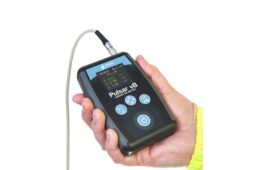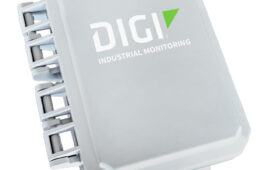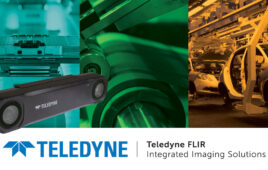
The ALPMA coagulator uses the P53 ultrasonic sensor to measure the level in the coagulator. The EHEDG-certified P53 sensor enables efficient cleaning, less wear over time, and lower costs due to its hygienic design and fully encapsulated stainless steel.
The U.S. is a surprisingly large producer of cheeses. Wisconsin alone produces over 3.2 billion pounds of cheese each year in this multi-billion-dollar industry. Creameries and cheese makers still follow many of the age-old traditions that our ancestors pioneered. But, to craft truly best-in-class cheeses, modern cheese makers must use state of the art equipment.
Alpenland Maschinenbau GmbH (ALPMA) is a manufacturer of machines and systems for the cheese and food industry. Among its many products, ALPMA developed a coagulator that allows for the continuous production of curd. Before its invention, the curd was produced in batch processes. Today, high-quality cheeses can be produced in volumes previously thought impossible.
The ALPMA coagulator uses the P53 ultrasonic sensor to measure the level in the coagulator. The EHEDG-certified P53 sensor enables efficient cleaning, less wear over time, and lower costs due to its hygienic design and fully encapsulated stainless steel.
The coagulator consists of a stainless-steel trough, up to 262-ft long, equipped with a specific belt and a partition wall system. Thereby, cells are created in which milk and rennet are continuously supplied while the curd is continuously removed at the other end.
That means the ALPMA coagulator can produce curd nonstop. The ALPMA 2000 coagulator, for instance, can process nearly 12,000 gallons of milk hourly. That enables creameries to scale production to previously impossible levels — and yet still produce cheeses with the same quality and flavor as though they were making small batches.
Many creameries and cheesemakers worldwide rely on ALPMA machines; for example, the majority of the American production of White Cheese / Feta and Cagliata (base product for mozzarella and pizza cheese) is manufactured using ALPMA equipment.
Any equipment used in food production, including cheese making, must meet the highest standards of hygienic design; food safety and quality depend on it. That’s why ALPMA now uses the hygienic ultrasonic sensors of the P53 series from PlL for level detection in the coagulator.
The coagulator and its components must endure frequent, thorough cleaning using highly acidic or alkaline cleaners – yet also keep cleaning efforts and plant downtimes as short as possible.
The detergents used in food production can penetrate even the smallest nooks and crannies to effectively remove any contamination and thus prevent bacteria from taking root and spreading. Often, these cleaning operations can lead to rapid wear, damage, and premature breakdown.
However, the P53 offers all-around stainless-steel casing and chemical-resistant seals that can withstand the rigorous cleaning protocols involved. It can also withstand steam, moisture, and the properties of objects and surfaces — none of which can interfere with the P53’s precise distance measurement.
Few sensor manufacturers offer sensors or accessories in EHEDG-compliant designs, due to the high costs of certified hygienic development. Many manufacturers of hygienic-critical applications rely on conventional sensors that require special cleaning considerations and are prone to increased cleaning costs and premature wear to comply with hygiene requirements.
Thanks to a high degree of protection (meeting lP68 and IP69K ratings), a fully encapsulated gap-free design made of V4A steel, and an allowable temperature range from -15° to 80°C (5° to 176°F), the P53 sensors can be easily cleaned with high-pressure or steam jet cleaners as production facilities wash their machines regularly.
The seamless transition of the casing into the front metal-sound membrane and the smoothness of the polished surfaces offer no adhesion for germs and thus guarantee maximum hygiene. Further, added aggressive cleaning agents are no problem for the sensor casing, whose chemical resistance is certified according to ECOLAB.
The P53 sensors come in variants with 30-mm or 18-mm casing diameters for measurement ranges of 80 to 1500 mm.
The versions with analog output (4.20 mA) are supplied by PlL with fixed characteristic curves, while the desired switching point for models with switching output via teach-in can be set quickly and easily by the user. Also, PIL is one of the few manufacturers to offer an EHEDG- certified holder for their hygienic sensors for reliable mounting or fixing in wall bares and casing openings or holding devices.
The holder consists of two half-shells which can be screwed together, and each has a passage for one of the sensor ends. When the halves are screwed together, the transmission seals made of foodstuff-resistant silicone 70/101, which meet the FDA’s approval requirements, are firmly pressed onto the conically shaped sensor ends and seal the gap between the sensor and the holder completely, reliably, and hygienically. DW
Hoffmann + Krippner
hoffmann-krippner.com
Filed Under: SENSORS




